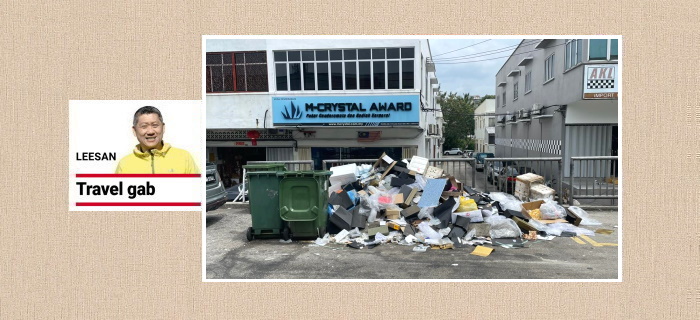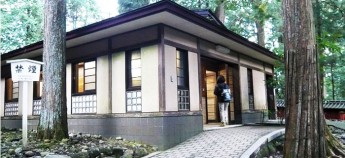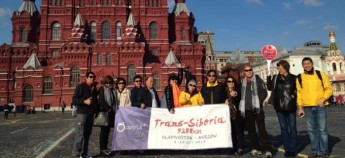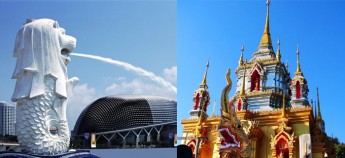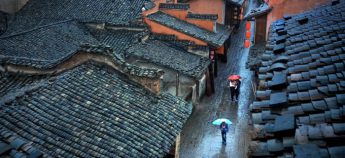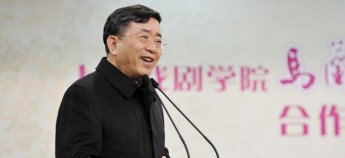The ‘forgotten’ city – by leesan
IN 1990, Malaysia was considered one of Asean’s four “Little Tigers”. In 1991, the country brought on its “Wawasan 2020” proclamation, to go along the goals of making Malaysia’s developed nation. Some of us would still remember this morale lifting vision back then, right?
We had a vision to create a more diverse range of national cars, to build the record-breaking Petronas Twin Towers, and to have a much-improved per capita income by the year 2020. We even had a vision to achieve a high-income society boasting a high education level, with everyone in the country having a rool over their heads.
Fast forward to 2023, of course we all know how far we have come today, and where we rank among the 10 member states of Asean.
It’s good to have a dream, as it will keep us motivated, until the dream is eventually fulfilled. Looking back, however, have we really fulfilled our dream, or are we still wishing for that same dream now?
Anyway, perhaps what we really need is a giant mirror that we can look into to see the future.
After graduating from secondary school in my hometown many years ago, a lot of my class- mates were making a beeline for Singapore in hopes of getting a job there and earning lucrative incomes. Unlike my contemporaries, though, I admired the glitzy cityscape of our own Kuala Lumpur and the abundant opportunities it offered. So I gathered my courage, picked up my backpack, and headed to the big city all alone.
More than 30 years have passed since Wawasan 2020 first came about, and we are still not yet a developed country today. And neither is our capital city a “smart city”!

Just a slogan, not a reality.
As the capital of the supposedly most powerful country among the Ascun Little Tigers, KL spans over 240sq km and is divided into six districts. The city now has a population in excess of two million, plus probably another one or two million migrant workers.
Nevertheless, for so many years our Federal Territories ministers and Kl. mayors seem to have been just busily handling matters related to land use and the development of commercial and residential areas. Former public recreational and community parks, and a handful of other public spaces, are now high-rise buildings. Fortunately, the federal government has put up more ration- al infrastructure in KL, such as the LRT, MRT, multi-level road interchanges, toll highways and flood mitigation tunnels/roads. Of course, there’s also the Multimedia Super Corridor, KLIA and klia2, though this last one is not exactly the best example since it usually gets a lot of com- plaints from international travellers.
But all these are hardware infrastructure. Even after an office tower, a highway or a bridge has been completed and transferred, the residual industrial waste is often left idle by the roadside. At the same time, our roads are becoming narrower. our green lungs are fewer, and even the availability of parking spaces is now a major issue.
Why not take a look at how Bangkok (Thailand) and Jakarta (Indonesia) are handling their international airports? We mustn’t underestimate Vietnam’s overall physical development and its growth prospects, too, especially the efforts they have put into the tourism industry. Has the Kuala Lumpur City Council ever shown interest in tackling the many “software” problems?
Well, certain areas in the city have nice roads, but some places have terrible roads, with potholes that seem to never be covered or fixed. What a shame!
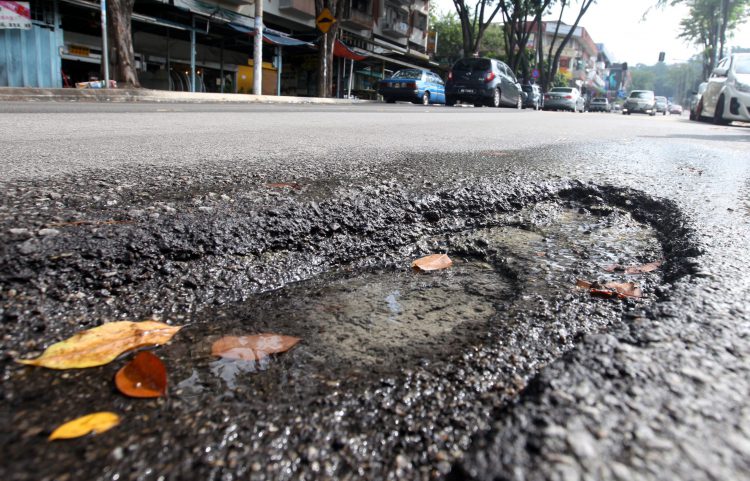
Potholes in the Klang Valley have been the bane of road users for the longest time!
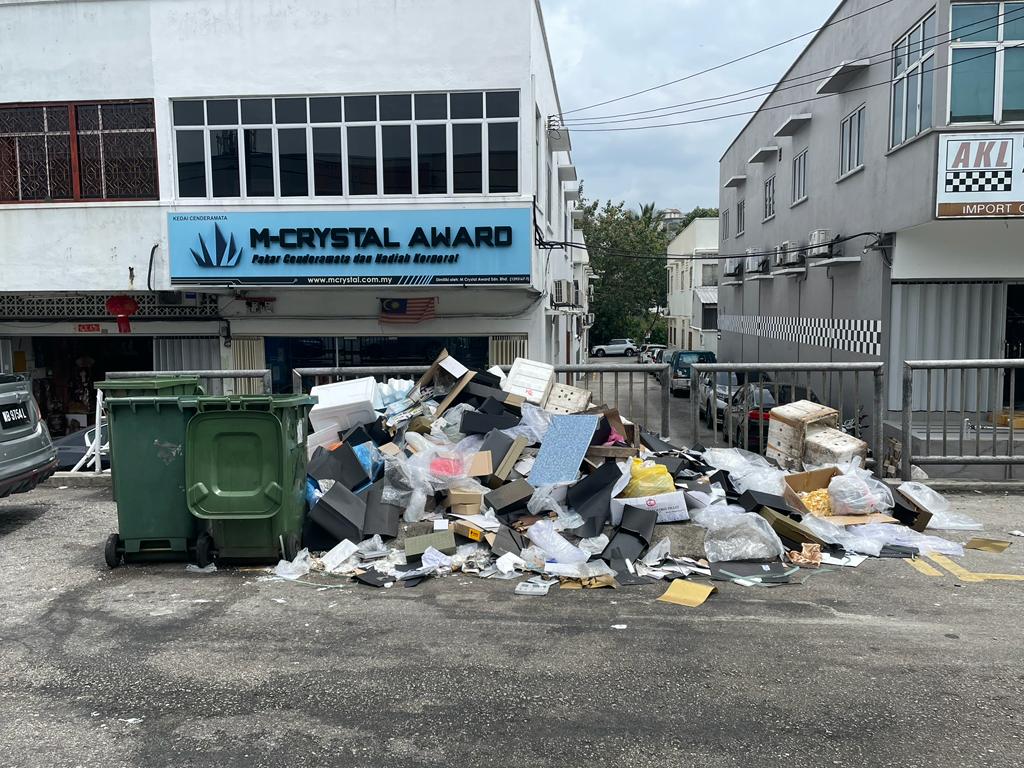
Some alleys in KL, like this one in Cheras, aree usually covered in rubbish and infested with rats and flies. – Photos:LEESAN
Also, the garbage situation in KL seems to be getting from bad to worse. Sure enough the litter- bugs themselves are to be blamed for this, but what about the local business owners? Why can’t they organise a gotong-royong to clean-up the area each week or something?
The situation is rapidly deteriorating, and this is definitely not the “Garden City” we once aspired KT. to be. Every now and then a major authority figure will lament on the city’s cleanliness and within 48 hours the place will be cleaned up. But what happens afterwards? Do we have to get the authorities to keep calling our mayors and ministers to remind them of their own obligations? Can’t they just fix all the problems once and for all?
The list of things that need to be fixed is indeed very long. Take a look at our roads and high- ways: The problem of traffic bot- tlenecks during peak hours has remained much the same throughout the years without much improvement. We can see that there are more and more high-rise towers and cars around us, but couldn’t the city authorities hire some urban experts to draw up a comprehensive road traffic strategy for our city? Take for example, the traffic in front of Pavilion Kuala Lumpur, which is perpetually stalled because of the unsolved traffc light problem at the junction of Jalan Bukit Bintang and Jalan Sultan Ismail. Perhaps the city council can consider flexibly adjusting the intervals of traffic signals according to the traffic conditions?
This suggestion may not work in reality (I’m not an expert!), but at least the city council can give it a try or come up with a more workable alternative solution. Anyway, this area is the meet- ing place for tourists from across the globe, and we simply cannot afford to risk tarnishing our good international reputation just because of the nightmarish traffic here.
To be fair, we are not trying to find fault with politicians, ministers or authorities, but this entails the most fundamental needs of city folks. At the very least, the elected representative of that particular area must take up the responsibility of fixing problems, and the relevant government departments should do their jobs dutifully.
If you are like me, a white/blue collar worker who has contributed towards the country’s development, naturally you would expect something from this country.
Take, for example, a friend of mine named Ling, who has to leave her house every day at 7am and walk 15 minutes to the nearest LRT station. It is convenient for her, and she is grateful for the city’s rapid transformation and progress over the years.
But the thing is, the moment Ling steps out of the LRT station, she is faced with either a non-existent walkway, or one that is not covered. If it is raining and Ling has to get to another station or bus stop before reaching her final destination, it would be difficult for her to do so, unless she carries an umbrella with her at all times.
And we mustn’t think that a sunny day is definitely better than a rainy one. If you walk along the streets and alleys in the Golden Triangle, you will be greeted with colourful under- garments that are hung on bam- boo poles just above you from the flats. Many of these are problematic for folks who take public transportation, and it has been going on for years.
I wonder why our LRT or MRT cannot be designed like the ones in Bangkok or Hong Kong, where they are indoor or covered out. door walkways linking adjacent buildings, to protect pedestrians from the scorching sim, rain… and undergarments?
In short, I feel that the federal government should pay more attention to Kuala Lumpur!
Leesan, the founder of Apple Vacations, has travelled to 137 countries, seven continents and enjoys sharing his travel stories and insights. He has also authored five books.

Published in STAR 2, 10 June 2023
全球超过80000家酒店,Apple101助您轻松订房,出行无忧,绝对优惠价。入住期间付款,多数客房可免费取消!
